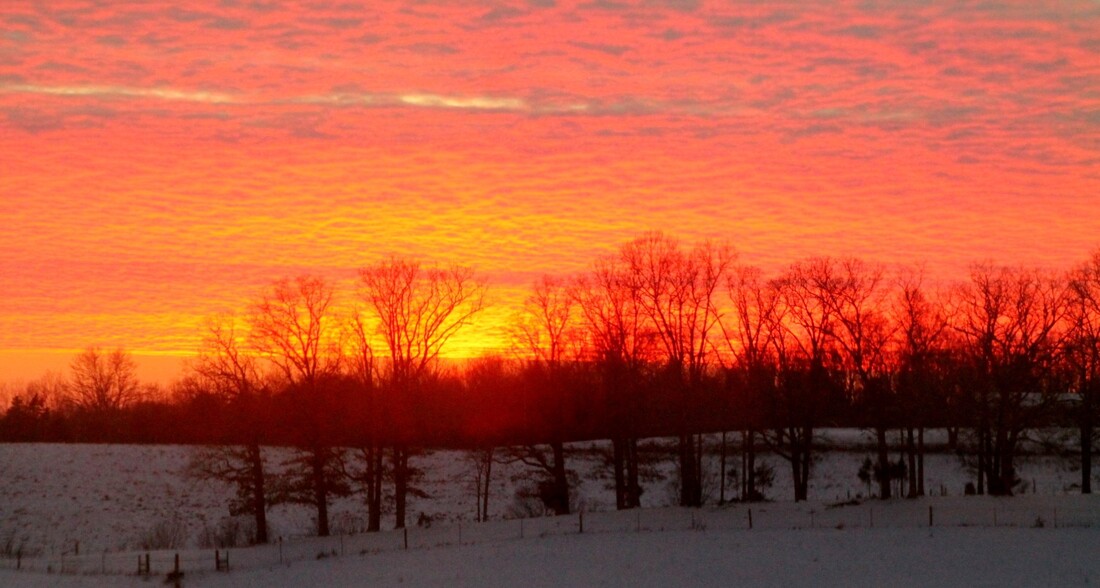|
As we start the new year, I can’t help but think about both the challenges and successes of last year. Farming is hard, there are challenges everyday that we must address to remain on track, less we fall behind never to catch up.
But thankfully there are rewards as well. Rewards that outshine the challenges. Rewards such as watching a new calf run in the lush spring grass. Rewards such as watching a brilliant sunset over a freshly mowed hay field. Rewards such as knowing you have made your farm a little better than when you got it. But as rewarding as farming can be the challenges are real, and 2019 certainly had its share. When I visit other producers at their operations there are always two topics that start the conversation. The first one is the weather. And that is because weather is the one constant that farmers have to deal with that can dictate our work down to the hour. We do everything because of the weather. We hurry up because of the weather. We wait because of the weather. We record the weather. We, sometimes foolishly, try to predict the weather. All because the weather controls every aspect of our operations. 2019 was a challenging weather year. We started off wet. There was mud, lots and lots of mud. And the rains didn’t let up going into summer. The first cutting of hay season was wet. There was both a lot of hurrying up and a lot of waiting in the hay fields. But then when the rain stopped, it dried up completely. The latter half of the summer was the driest that we had experienced since 2012. Much of the state was in the severe drought category and didn’t see rain for nearly 90 days. And to make matters worse, the dry and heat persisted into October. There was no fall weather to speak of this year. It simply jumped from summer to winter. At Eden Shale Farm, there were exactly 40 days between the last 90 degree day and the first snow fall with a low of 7 degrees! There is no denying that the second half of the year was very challenging in regards to both weather and consequently, forages. The drought dried up all the grass, and the short fall window was not long enough to gain any regrowth. Some producers have been feeding hay since August, and its still a long way out until the grass will start growing again. I’m afraid mud is going to be another huge problem this spring given the conditions going into the winter. Weather; we talk about it so often because it is the largest challenge in our day to day operations. The second topic that always comes up with producers is the markets. “How’s the cattle prices doin?” “What’s the market going to do this year?” “You think they’ll go up any?” This is always how the conversation starts. My response is always the same, I have no idea… What I do know is that things are volatile and can and will change quickly. We operate in a global economy and everything has a ripple effect. Whether it’s a packing plant burning or an ill-timed tweet, you can guarantee it will have an effect on the markets. This is a new age and the traditional cycles of marketing cattle don’t hold true. I would suggest you stay open to what the markets are giving you, and don’t get caught up in tradition. 2020 will certainly be a challenging year. But I know this, farmers are eternal optimist. Farmers are forever resilient, and we will find a way to continue doing what we love. Which is producing the safest, most secure source of food on the planet. So for all the challenges that will come our way this year, may you find greater rewards. Comments are closed.
|
Archives
June 2024
Categories
All
Welcome |
CONTACT US |
EMAIL SIGN UP |
|
Eden Shale Farm
245 Eden Shale Rd. Office: (859) 278-0899 Owenton, KY 40359 Fax: (859) 260-2060 © 2021 Kentucky Beef Network, LLC.. All rights reserved.
|
Receive our blog updates
|


 RSS Feed
RSS Feed
